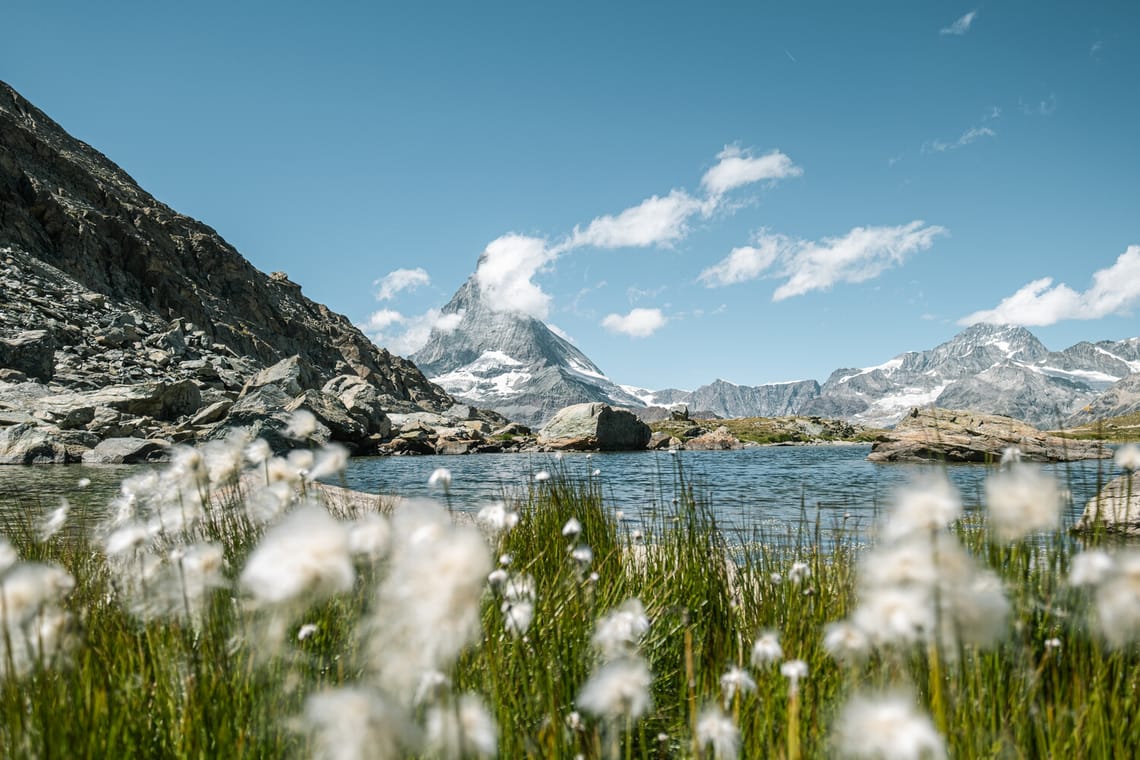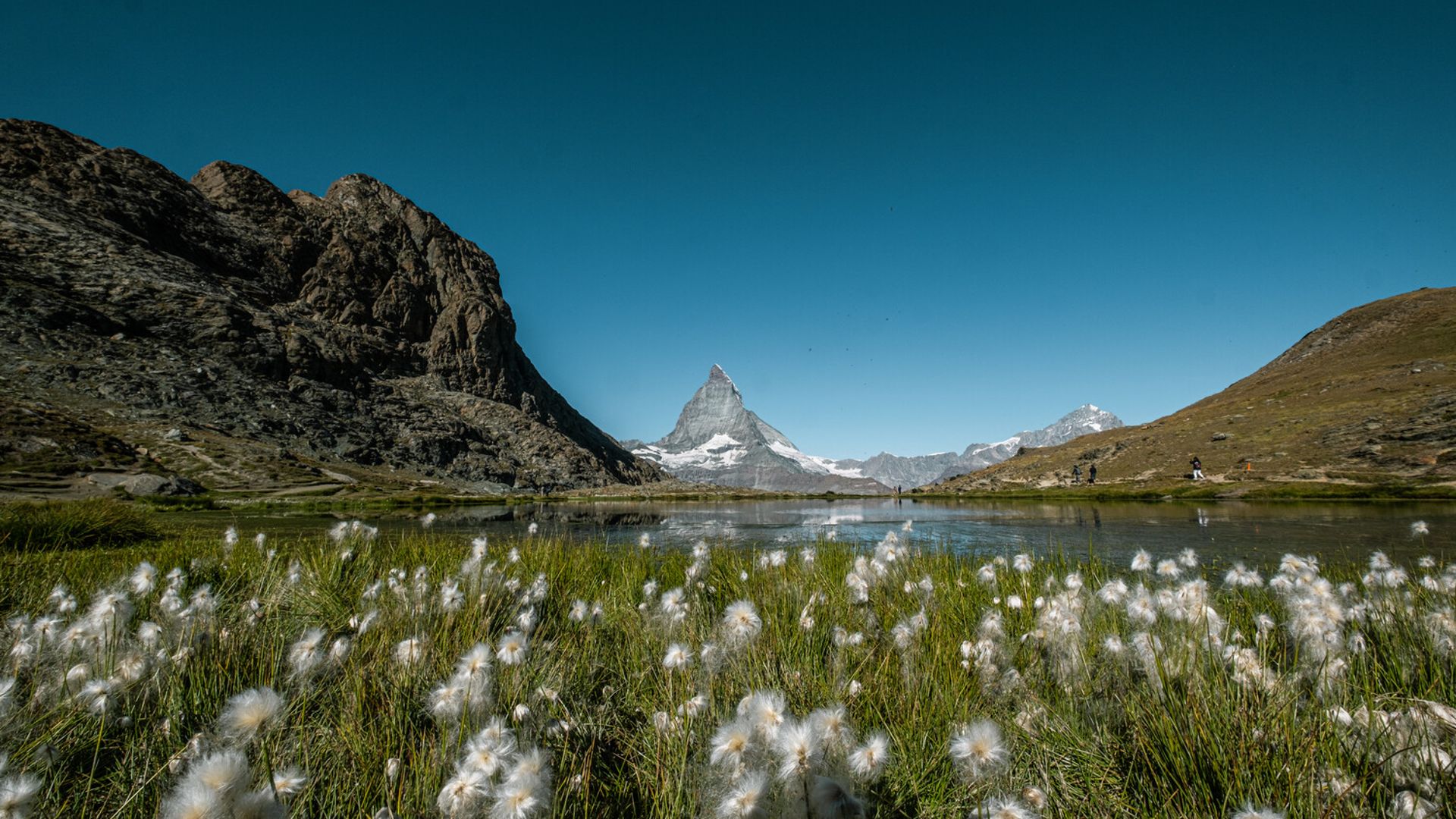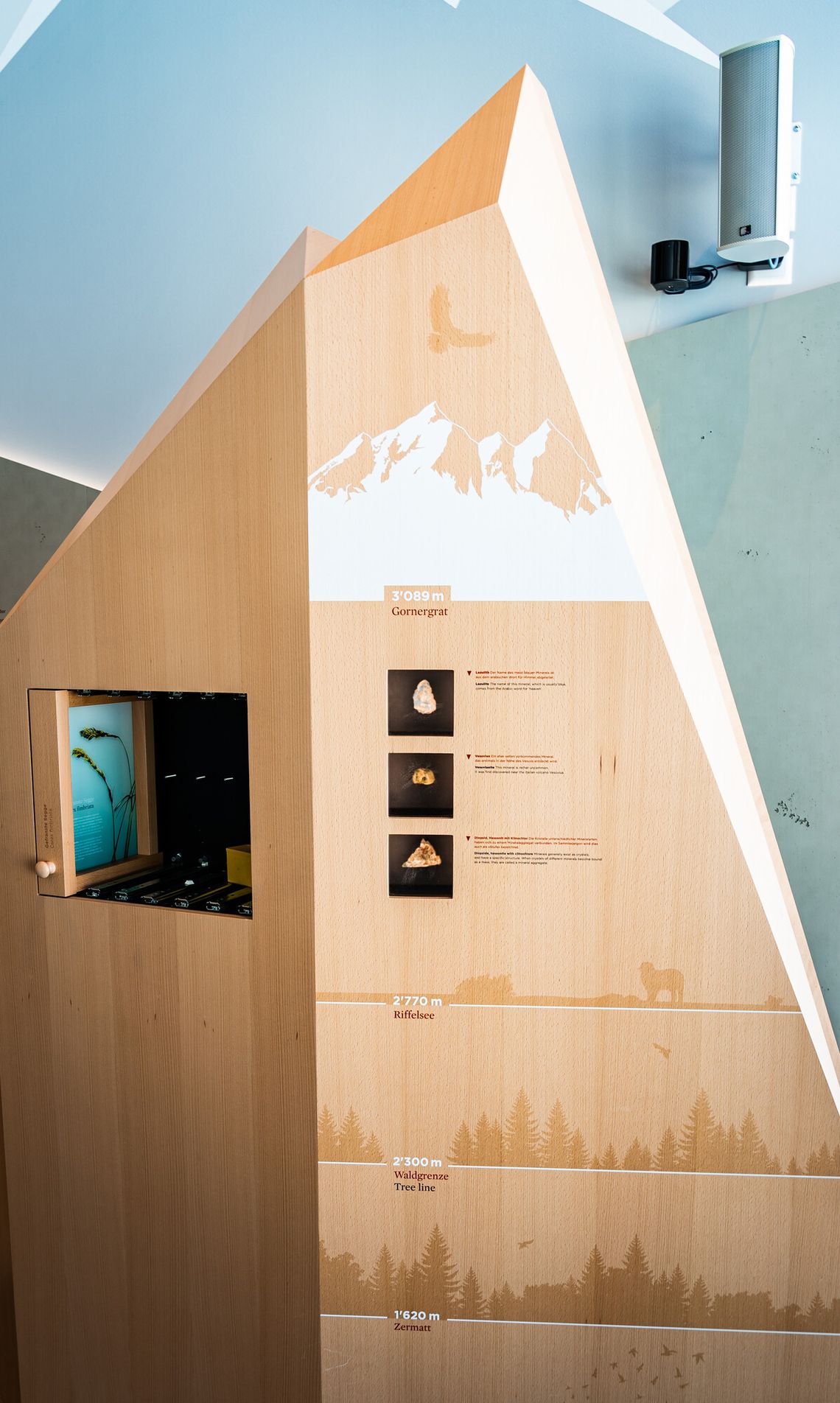Real rarities
Botanical and mineral rarities.
Botanical and mineral rarities.
If you hike from the Gornergrat to Riffelsee and further on to Riffelalp, you can discover a wealth of flowers. The Mattertal is shielded from rain and snow on three sides by 38 ‘four-thousanders’, mountains over 4,000 m, which ensures an extremely dry climate, even at higher altitudes.
The conditions are perfect for botanical rarities which only exist in the Zermatt region. Many unusual minerals occur on the rocky slopes around the Gorner Glacier area.
King-of-the-Alps
Eritrichium nanum
You might already have seen this attractive cushion plant on the Gornergrat, but if not, you can certainly find it nearby on the Gornergrat's southern slope. The King-of-the-Alps probably came here from Central Asia before the last ice age and then survived the inhospitable conditions on peaks that remained free of ice. Its flowers resemble those of the forget-me-not, and they appear between July and August.
Alyssum species
Alyssum alpestre
A beautiful, low herbaceous plant, which in Switzerland is native to only one place: the Gornergrat's southern slope. The yellow flowers of this species of alyssum are grouped in terminal clusters and can be admired in July and August.
Haller's Ragwort
Senecio halleri
This species of ragwort is endemic to the Valais-Italy border region, meaning that it only occurs here. If you are careful — and lucky — you can find it on the Gornergrat’s southern slope. The Latin and German names of the ragwort genus refer to the white fibres on the seeds, which resemble an old man's hair. The flowers appear in July and August.
Scheuchzer's cotton grass
Eriophoretum scheuchzeri
You can spot them from afar on the shores of Riffelsee: the fluffy, white balls of Scheuchzer's Cotton Grass, a type of sedge. On the Gornergrat, it even holds the altitude record, growing at heights of up to approx. 3,000 metres. Its cotton-like, spherical flower heads appear between June and August.

Cotton grass at Riffelsee Lake with Matterhorn in the background
Umbel Pennycress
Thlaspi lerescheanum
A rare find on the scree slopes along the hiking trail from Gornergrat to Riffelsee: this member of the vast pennycress family grows among stony debris and in rock crevices in the High Alps. It spreads by sending out long root stalks (rhizomes) beneath the surface. They take root when they find soil and send up shoots as a 'new' plant.
Carex fimbriata
Carex fimbriata
This crevice specialist can cope with extreme climatic conditions and is mostly limited to areas of serpentine-rich rock. On your way from Riffelsee to Riffelalp, it is worth making a detour to the small vantage point on Gagenhaupt. There you can easily spot the plant, 10 – 40 centimeters high.
Dwarf Rampion
Phyteuma humile
This very rare plant grows in crevices and has long been native to the Zermatt region. Ten thousand years ago, it survived the last ice age on mountain peaks and some slopes facing south-to-southwest which rose above the ice sheet. A good place to look for Dwarf Rampion is the small vantage point on Gagenhaupt. You can get there by making a detour of about five minutes from the Riffelsee path.
Lazulite
The name of this mineral, which is usually blue, comes from the Arabic word for 'heaven'.
Vesuvianite
This mineral is rather uncommon. It was first discovered near the Italian volcano Vesuvius.
Diopside, hessonite with clinochlore
Minerals generally exist as crystals, and have a specific structure. When crystals of different minerals become bound as a mass, they are called a mineral aggregate.

.jpg?fm=jpg&fl=progressive&fit=fill&q=45&w=1140)
